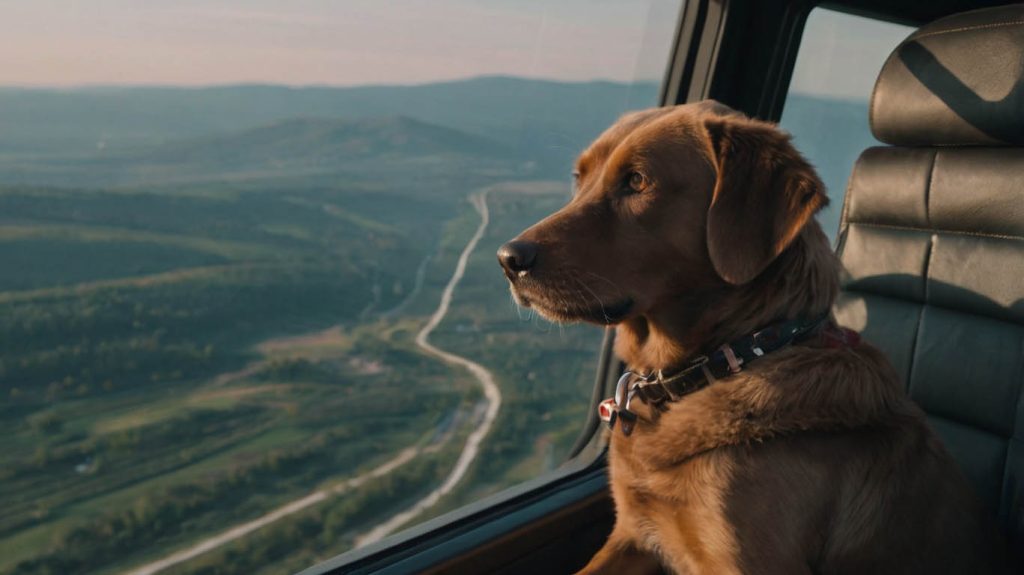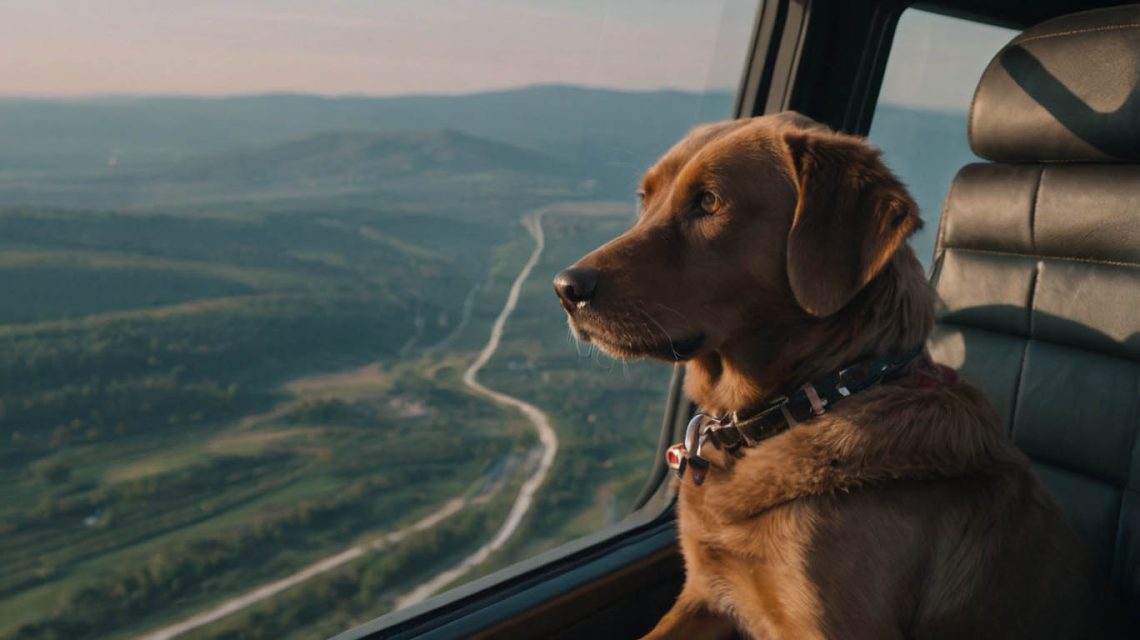How Can I Fly With My Dog? The Ultimate Guide for a Smooth Journey
You’re planning a trip, looking at exciting destinations, and then you glance down at the loyal companion by your side. The immediate, pressing question hits you: “How can I fly with my dog?” For many pet owners, this question brings a wave of anxiety, filled with images of confusing rules and stressful airport scenes. However, you can absolutely make this happen smoothly.
In fact, a successful flight with your dog is not about luck; it’s the result of diligent planning and a clear, step-by-step process. This guide is designed to answer your question, “how can I fly with my dog?” in the most comprehensive way possible. We will walk you through the entire journey, from the critical decisions you need to make months in advance to the moment you and your furry co-pilot land safely. Consequently, you can trade your stress for excitement and prepare for an amazing adventure together.
The First Big Decision: How Can I Fly With My Dog, In-Cabin or Cargo?
Before you even think about booking a ticket, you must answer this fundamental question. Your dog’s size and weight will almost always dictate the answer, as airline policies are very strict on this matter.

Option 1: Flying In the Cabin With Your Dog
This is, without question, the safest and most desirable option. Your dog travels in an airline-approved carrier that fits under the seat directly in front of you.
- Who Qualifies? This option is exclusively for small dogs. Most airlines enforce a weight limit of around 20-25 pounds, which often includes the combined weight of your dog and their carrier.
- The Benefits: Your dog remains by your side, which dramatically reduces stress for both of you. You can monitor their comfort, speak to them, and ensure their well-being throughout the flight.
- The Drawbacks: It is limited to small breeds. Furthermore, airlines only permit a small number of pets in the cabin per flight (often 4-6), so you must reserve their spot as early as possible.
Option 2: Flying in the Cargo Hold
If your dog is too large to fit under a seat, the cargo hold is the only alternative for them to fly on the same plane as you. They travel in a hard-sided, IATA-compliant kennel within a temperature-controlled and pressurized compartment of the aircraft.
- Who Qualifies? This is for medium and large breeds that exceed the in-cabin size and weight restrictions.
- The Benefits: It makes air travel a possibility for large dogs who would otherwise have to stay behind.
- The Drawbacks: This can be a very stressful and potentially frightening experience for a dog. There are also risks associated with handling and temperature fluctuations on the tarmac. Crucially, nearly all airlines refuse to transport brachycephalic (flat-faced) breeds like Bulldogs, Pugs, and Boxers in cargo due to their high risk of respiratory issues.
A Step-by-Step Guide for When I Fly With My Dog
Once you’ve determined how your dog will travel, it’s time to execute the plan. The key to a stress-free experience is starting this process weeks, or even months, ahead of your travel date.
Step 1: Contact the Airline Directly (Before Booking Your Ticket!)
This is the single most important action you will take. Do not book your own flight online until you have spoken with an airline representative over the phone.
- What to Do: Call the airline’s main customer service number. State clearly, “I need to book a flight and want to know how can I fly with my dog on that specific route.” Ask them:
- “Are there pet spots available on the exact flight numbers I am considering?”
- “What are your maximum carrier dimensions for in-cabin travel?”
- “What is your pet fee?” (Expect around 95−95−125 each way for domestic travel).
- “What are your specific requirements for a health certificate?”
- Why It’s Critical: A flight may show seats available for you, but the limited pet spots could already be filled. Securing your dog’s reservation first is the foundation of a successful trip.
Step 2: Schedule the Necessary Veterinary Visit
Your veterinarian is an essential partner in this process. You will need an official document called a Certificate of Veterinary Inspection (CVI), or health certificate.
- What to Do: Schedule a vet appointment for your dog. Most airlines require this certificate to be issued no more than 10 days prior to your departure. Your vet will confirm your dog is healthy, free of communicable diseases, and up-to-date on all vaccinations, especially rabies.
- Check the Microchip: This is also the perfect opportunity to have the vet scan your dog’s microchip and ensure your contact details are current in the registry.
Step 3: Choose the Perfect Airline-Approved Carrier
The right carrier is not a mere suggestion; it is a strict airline requirement and your dog’s safe space during the journey.
- For In-Cabin Travel:
- Choose a soft-sided carrier. These offer more flexibility and can be slightly compressed to fit under different seat configurations.
- Measure everything. The carrier absolutely must comply with the airline’s maximum allowed dimensions.
- Look for key features: Ample mesh ventilation, secure locking zippers, a waterproof bottom, and a padded shoulder strap are must-haves.
- For Cargo Travel:
- You must use an IATA-compliant hard-sided kennel. It must be constructed from rigid plastic and secured with metal nuts and bolts (most airlines forbid plastic clips).
- Size it right: The kennel must be large enough for your dog to stand up straight, turn around completely, and lie down in a natural position.
Step 4: Practice, Practice, Practice with the Carrier
Your most important training task is to ensure your dog sees their carrier as a safe den, not a scary trap. This is a vital part of answering “how can I fly with my dog” in a way that prioritizes their emotional well-being.
- What to Do: Weeks before you fly, leave the carrier open in your home. Make it the best place to be by putting treats, favorite toys, and a comfy blanket inside. Start feeding your dog their meals in the carrier. Once they enter willingly, begin zipping the door for a few seconds at a time, gradually extending the duration.

On Travel Day: How I Fly With My Dog Like a Pro
Your meticulous preparation is about to pay off. Follow this checklist for a smooth airport experience.
Before You Leave for the Airport
- Get Moving: Start the day with a long walk or a vigorous play session. A tired dog is more likely to rest calmly during the flight.
- Mealtime: Provide a light meal about four hours before you leave. This helps prevent motion sickness and accidents.
- Potty Break: Locate the airport’s pet relief area on a map before you arrive. Make this your last stop before heading inside to check in.
Navigating the Airport and Security
- Check-In: You must check in at the full-service counter with an agent. You cannot use a self-service kiosk with a pet. Have your dog’s health certificate and reservation handy.
- The TSA Checkpoint: Be prepared for this step. You will have to remove your dog from the carrier. You will then carry your dog in your arms through the metal detector while the empty carrier goes through the X-ray machine. Make sure your dog is on a secure harness and leash.
Critical Safety Warning: The Most Important Rule When I Fly With My Dog
Knowing what to do is important, but knowing what not to do is crucial for your dog’s safety.
Never sedate your dog for a flight. The American Veterinary Medical Association (AVMA) and every major airline strongly advise against it. Sedatives can dangerously suppress a dog’s respiratory and cardiovascular systems at high altitudes. If your dog is extremely anxious, talk to your vet about prescription anti-anxiety medications (like Trazodone), which are different from sedatives and generally considered safer for air travel.
Conclusion: You’re Ready for Your Adventure
The question “how can I fly with my dog?” no longer needs to be a source of stress. As you can see, a safe and successful journey is entirely achievable through careful planning, early action, and a focus on your dog’s comfort. By following these steps, you have a clear roadmap to take your best friend with you on your next great adventure.
Have you flown with your dog? What’s your #1 tip? Share your experience or ask any remaining questions in the comments below!


